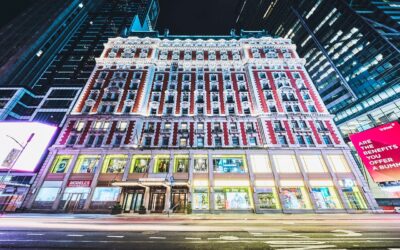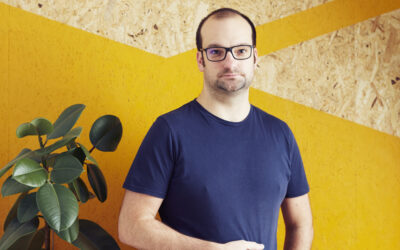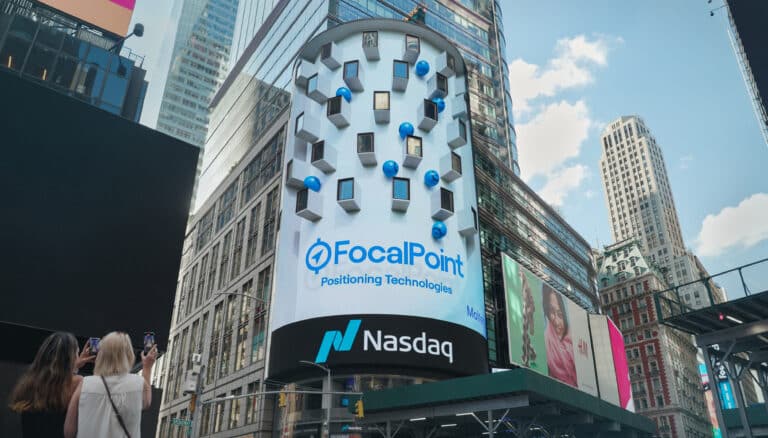Leeds animation studio Northforge has completed a high profile brief to create an anamorphic animation for the famous Nasdaq screen in New York’s Times Square.
The team was commissioned by Make Associates to create an animated sequence for its client FocalPoint – a deep-tech company specialising in ground-breaking positioning technologies. The ad featured as part of a larger reel for Molten Ventures, a principal investor in FocalPoint, who wanted to showcase some of the most innovative brands in its portfolio. The final films featured on the famed Nasdaq screen in Times Square.
The Northforge team was led by Matt Simpson and Matt Taylor, and their challenge was to bring FocalPoint’s vision to life in a captivating film that highlighted the unique features of the digital screen. The billboard is punctured with 26 windows and FocalPoint were determined to celebrate this distinctive detail, rather than simply work around it.
Working closely with Make, Northforge embarked on creating an anamorphic projection. They knew that this had not been done before on the Nasdaq screen, so it would deliver the wow factor they sought. Combining Make’s vision with their own thoughts they designed a route that would harness the technique. The anamorphic projection works by making the viewer stand in a very specific spot. It also felt really relevant to the client.
Once the concept was settled, there was one major problem that needed to be addressed. Although the team had the specifics of the screen they had no physical measurements of the building or exact screen location, all of which are critical in order to make the perspective work. Attempts were made to discover these facts, but no research provided them with the detailed measurements they required. Therefore, it was decided that in order to gather such invaluable information it would be productive to commission a photographer in NYC to take multiple shots from a multitude of positions.
Once combined, the Northforge team used mathematics to accurately plot the physical size and position of the screen on the building. Rebuilding the screen and building it within a 3D environment allowed the team to test their animation.
Creating an illusion whereby an image appears to be totally distorted when seen from the usual vantage point, but appears normal when viewed from a specific angle is a complex process. Without any access to the screen, or indeed a testing period, there was no room for any mistakes. The success of the final film would only be evident when it was finally projected.
Thankfully the effort and attention to detail paid off as the 15-second sequence projected perfectly.











